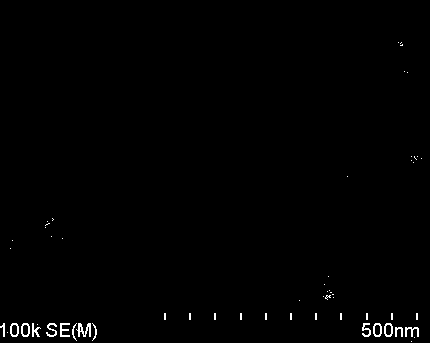Method for preparing zirconia ceramic ultrafiltration membrane
A zirconia ceramic and ultrafiltration membrane technology, applied in chemical instruments and methods, ultrafiltration, membrane technology, etc., can solve the problems of small permeation flux, poor membrane strength, and insufficient filtration accuracy, and achieve high precision. The effect of filtering effect, reducing production cost and improving production efficiency
- Summary
- Abstract
- Description
- Claims
- Application Information
AI Technical Summary
Problems solved by technology
Method used
Image
Examples
Embodiment 1
[0031] Dissolve 58g of zirconium oxychloride octahydrate in 192g of water, raise the temperature to 70°C and add 7.5% aqueous ammonia solution with stirring until the pH rises to 8.5, and stir for 2 hours to form a white emulsion. Suction filter the white emulsion with a suction filter, add water and then suction filter several times until the chloride ion concentration is lower than 10PPM. After that, add water to the filtered precipitate to 200g, raise the temperature to 70°C and stir, then slowly add 6.4% nitric acid aqueous solution until the pH of the solution drops to 1.5, and continue to keep stirring at 70°C for 10 hours. Then take out the solution, add 120g of water, add 10g of glycerin, add 10g of polyethylene glycol 1000, add 20g of polyvinyl alcohol aqueous solution with a concentration of 20%, stir evenly, and dip and coat the solution on a 200nm ceramic filter membrane substrate. Afterwards, the substrate is dried, put into a high-temperature reaction kettle, and...
Embodiment 2
[0033] Dissolve 50g of zirconium oxychloride octahydrate in 192g of water, raise the temperature to 75°C and add 7.2% aqueous ammonia solution with stirring until the pH rises to 8.2, and stir for 2 hours to form a white emulsion. Suction filter the white emulsion with a suction filter, add water and then suction filter several times until the chloride ion concentration is lower than 10PPM. After that, add water to the precipitate after suction filtration to 180g, raise the temperature to 70°C and stir, then slowly add 5% nitric acid aqueous solution until the pH of the solution drops to 0.5, and continue to keep stirring at 75°C for 10 hours. Then take out the solution, add 120g of water, add 12g of glycerin, add 12g of polyethylene glycol 1000, add 20g of 10% polyvinyl alcohol aqueous solution, stir evenly, dip and coat the solution on a 100nm ceramic filter membrane substrate. Afterwards, the matrix is dried, put into a high-temperature reaction kettle, and an aqueous sol...
PUM
| Property | Measurement | Unit |
|---|---|---|
| pore size | aaaaa | aaaaa |
| pore size | aaaaa | aaaaa |
| pore size | aaaaa | aaaaa |
Abstract
Description
Claims
Application Information
 Login to View More
Login to View More - R&D
- Intellectual Property
- Life Sciences
- Materials
- Tech Scout
- Unparalleled Data Quality
- Higher Quality Content
- 60% Fewer Hallucinations
Browse by: Latest US Patents, China's latest patents, Technical Efficacy Thesaurus, Application Domain, Technology Topic, Popular Technical Reports.
© 2025 PatSnap. All rights reserved.Legal|Privacy policy|Modern Slavery Act Transparency Statement|Sitemap|About US| Contact US: help@patsnap.com


